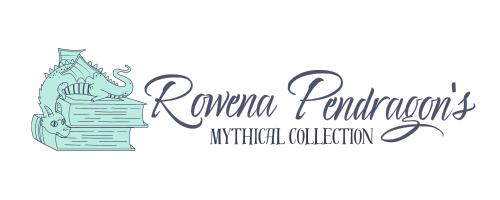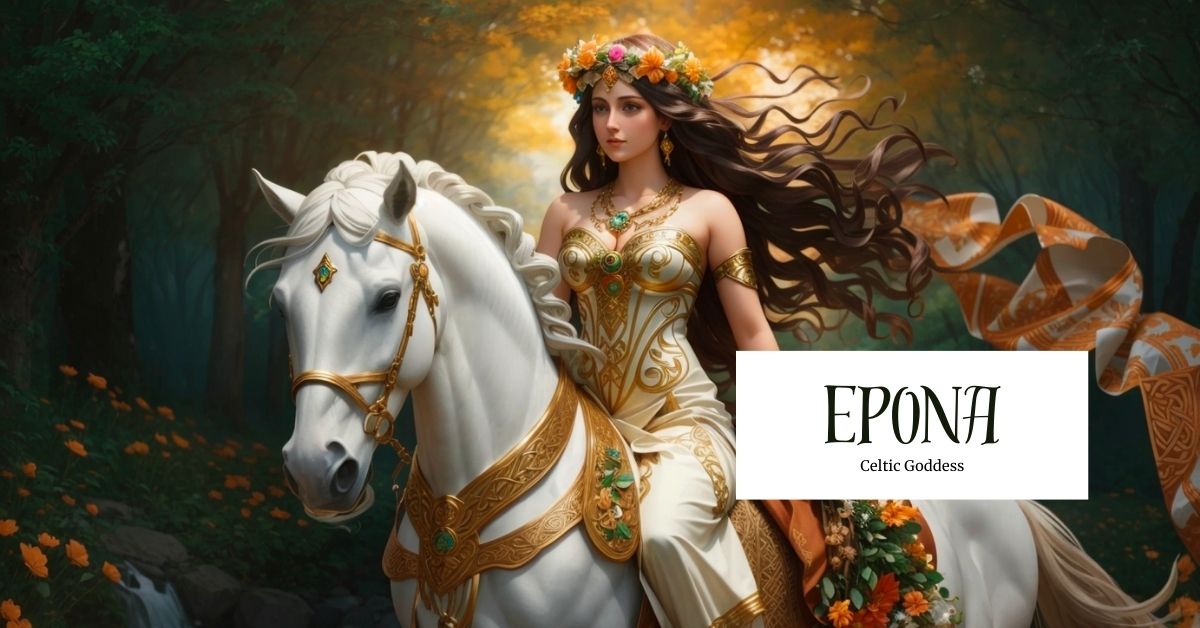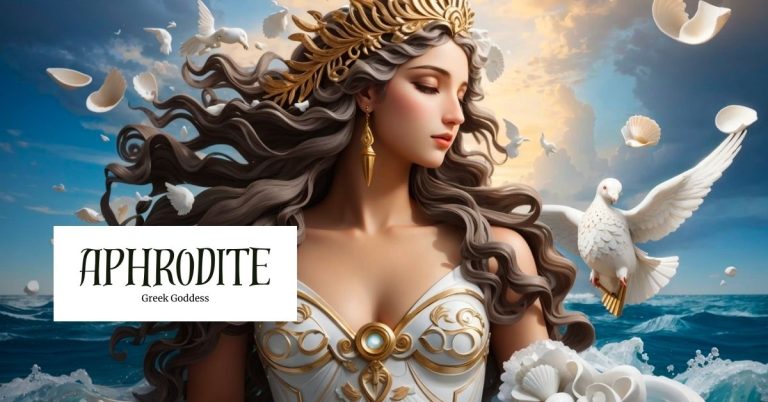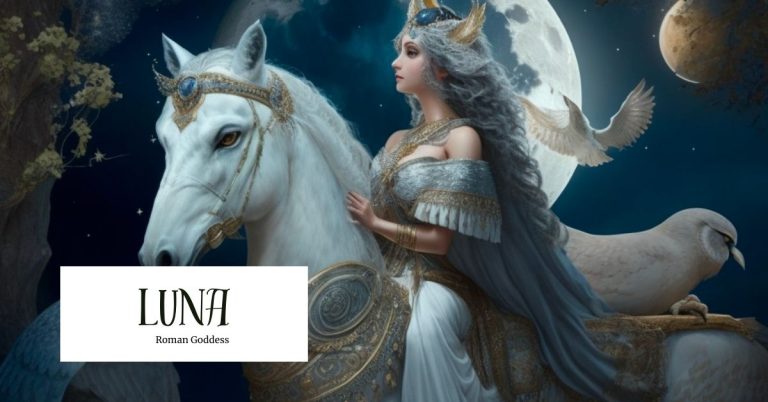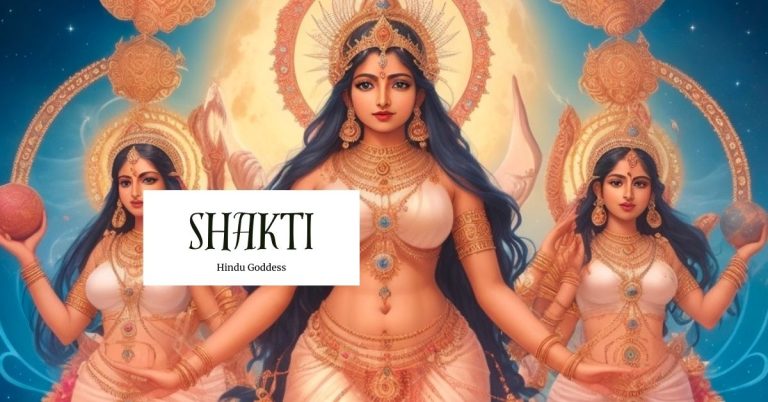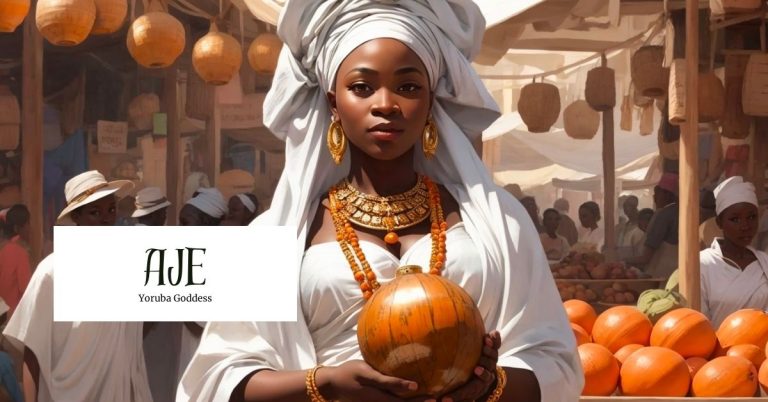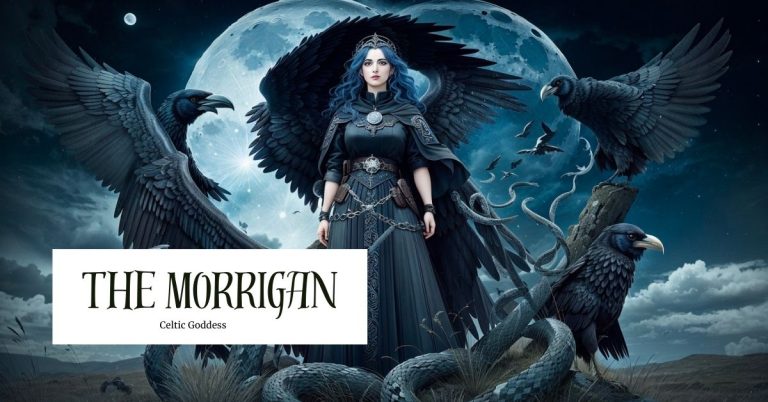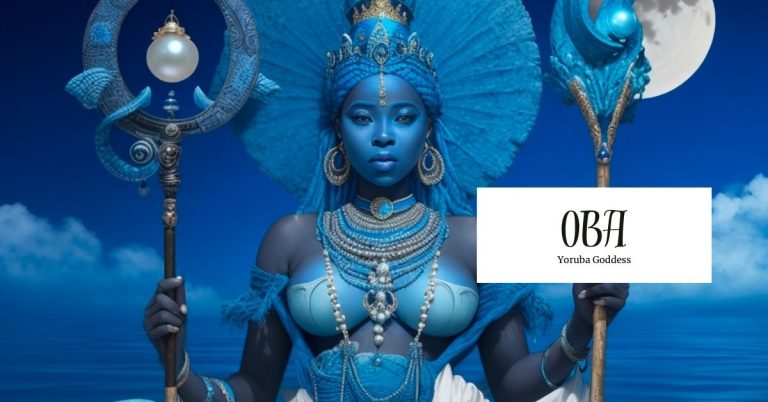Goddess Epona: The Divine Embodiment of Horses and Fertility
In the realms of ancient Celtic mythology, Goddess Epona stands as a revered and enigmatic figure, embodying the qualities of horses, fertility, and the natural world. As a deity whose origins can be traced back to the Gaulish tribes of Western Europe, Epona’s influence transcended geographical borders, captivating the imaginations of diverse cultures.
From her intimate association with horses, symbolizing strength and untamed grace, to her role as a benevolent mother goddess fostering fertility and abundance. Epona’s domain extends far beyond her association with horses, as we discover her diverse roles as a protector, nurturer, and guide. Her enigmatic presence has also been linked to fertility, the cycle of life, and the afterlife, fostering a profound connection between the natural world and the spiritual realm.
Overview
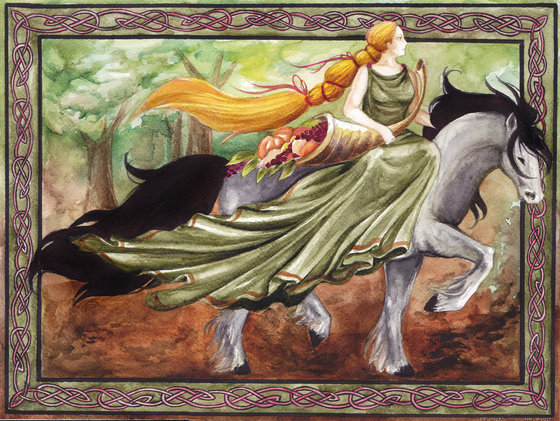
Source: Mast Producing Trees
Originating from the verdant landscapes of ancient Gaul, Epona’s worship extended across various Celtic tribes. Eventually she transformed into the pantheon of Roman deities, where she gained further prominence and adoration. This goddess transcended geographical boundaries, captivating the hearts of countless devotees across Europe and beyond.
The core essence of Epona lies in her deep association with horses. As the guardian and protector of equines, she held a unique place in the hearts of warriors, farmers, and travelers alike, who sought her benevolent guidance in their equestrian pursuits. Her role as the celestial caretaker of horses ensured the animals’ safe journeys, successful hunts, and bountiful harvests, making her an indispensable figure in the lives of ancient communities.
Beyond her equestrian domain, Epona’s influence extended into the realm of fertility and nurturing. As a revered mother goddess, she embodied the cycles of life, from birth to growth and eventual rebirth. Her blessings were sought by those desiring fertility and prosperity, emphasizing her role as a provider and sustainer of life’s bounties.
Throughout history, Epona’s worship found expression in various forms, from sacred shrines and altars erected in her honor to intricate artwork. Her presence was also integrated into Roman society, where her image adorned amulets, household items, and even coins.
Titles
- Opona
- The Great Mare
- Horse Goddess
Abilities
Goddess Epona, celebrated in Celtic mythology, possesses an array of remarkable abilities, making her a multifaceted deity revered by ancient civilizations. As a land ruler, she extends her influence over territories, possibly even the underworld. Epona’s divine essence also bestows her with dream goddess attributes where her ethereal presence subtly influences the subconscious. She is known to specialize in dreams and nightmares.
In her nurturing role, she emerges as a protector of horses and foals, embodying the essence of the Celtic goddess of horses. Furthermore, her benevolence extends to any creature that keeps humans company, fostering a sense of care and guardianship that resonates through the annals of time. Epona’s profound connection to the land and her multifarious abilities reveal a goddess revered for her boundless power and enduring legacy.
Characteristics
In every portrayal, she is inextricably linked to her sacred companions, the embodiment of their grace, strength, and untamed beauty. Epona is often depicted as a radiant woman with an aura of serenity and divine authority. She possesses an otherworldly charm that captures the hearts of all who behold her. Her countenance exudes a sense of gentle yet resolute power, reflecting her role as a protector and nurturer.
Adorned in flowing robes that seem to merge seamlessly with the natural world around her, Epona’s attire often incorporates symbols of abundance and fertility. She may be adorned with floral crowns, a testament to her dominion over the cycle of life and growth. Her clothing and jewelry are elegantly crafted, evoking a sense of regal splendor while still embracing the simplicity of nature.
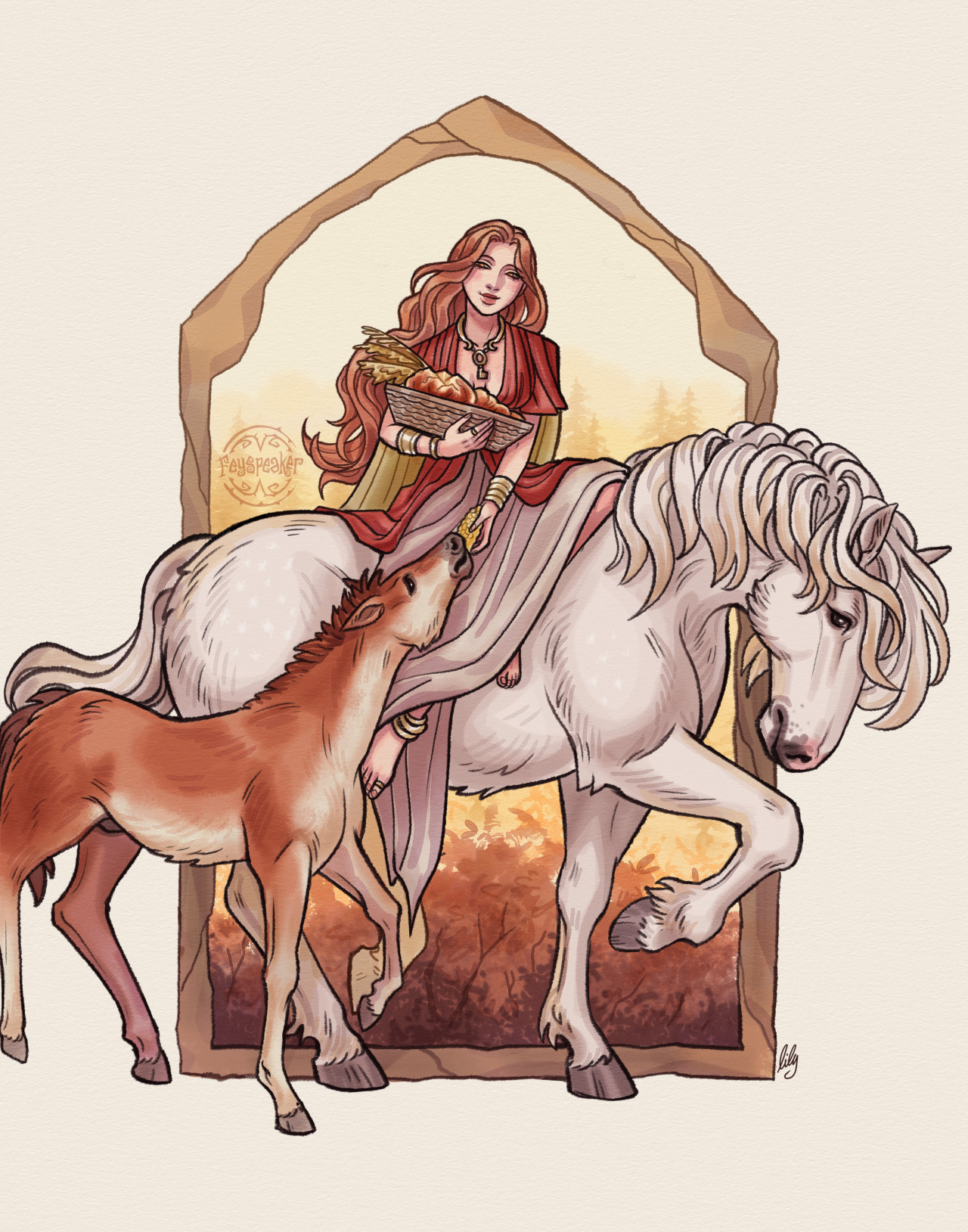
Source: FeySpeaker
The horse goddess’s flowing hair cascades like waves, echoing the untamed spirit of the horses she holds dear. Often intertwined with wildflowers or leaves, her locks symbolize the inseparable bond she shares with the earth and all its creatures. Her eyes, deep and all-knowing, reflect a wisdom borne of ancient knowledge and a profound understanding of the natural order.
Traits
Epona’s foremost personality trait is her nurturing nature. Like a devoted mother, she cares for and protects not only the horses under her charge but also the creatures of the natural world. Her presence is a comforting and reassuring force, and those who seek her guidance find solace in her watchful care.
Despite her powerful and regal aura, Epona possesses a compassionate heart. She understands the struggles and challenges faced by mortals, and her gentle demeanor extends to those who seek her aid. Epona’s empathy makes her approachable, and she willingly lends her support to those in need.
Epona’s association with fertility ties her personality to the concept of growth and abundance. She embodies the cyclical nature of life, celebrating the bounty of the earth and the promise of new beginnings. Her presence is a reminder of the eternal renewal found in the natural world.
Symbols
Perhaps the most prominent and significant symbol of Goddess Epona is the horse itself. As the goddess of horses, she is invariably depicted in the company of these majestic creatures, emphasizing her deep connection with them. Horses are emblematic of strength, freedom, and grace, mirroring the attributes of Epona herself.
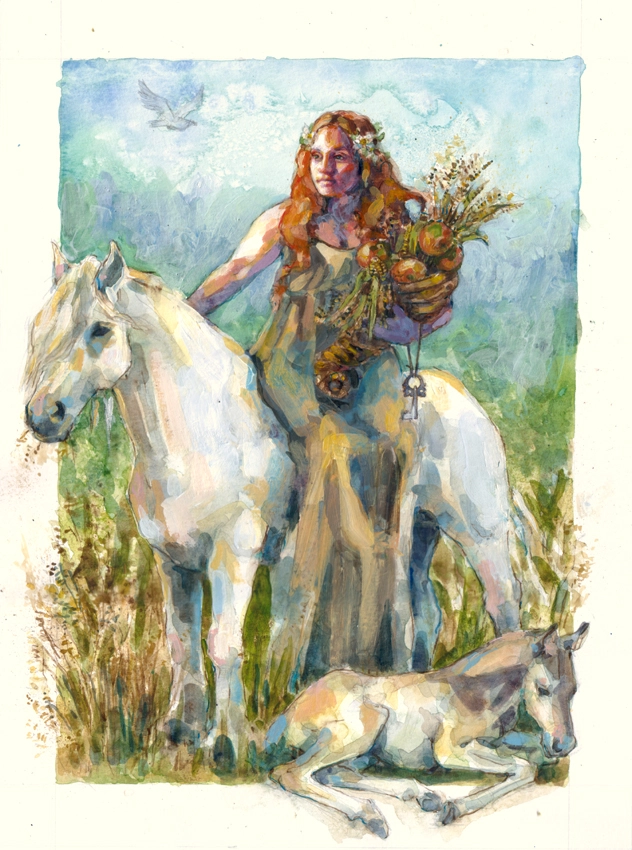
Source: Journeying to the Goddess
The official symbol of Goddess Epona is the cornucopia, a horn-shaped basket overflowing with fruits, grains, and other bountiful harvests. This representation underscores her connection to fertility and abundance. It symbolizes the prosperity and blessings she bestows upon the land, nurturing its fertility and ensuring a rich harvest. The cornucopia also embodies the cycle of life, from the sowing of seeds to the reaping of the harvest, in alignment with her role as a mother goddess associated with the cycles of nature.
In many depictions, Epona is adorned with floral crowns, garlands, or other botanical elements woven into her attire. These symbols further emphasize her association with fertility and the natural world. The flowers represent the renewal of life, the beauty of nature, and the cyclical seasons that bring growth and rebirth.
Festivals and Rituals
Goddess Epona’s festivals and rituals are a testament to the deep reverence and adoration bestowed upon her by ancient civilizations, especially the Romans. One of the most significant celebrations dedicated to her is the Roman feast day observed on December 18th.
The Romans celebrated a joyous festival dedicated to Goddess Epona, on December 18th. This special occasion was marked by various rituals and festivities that honored the benevolent deity of horses and fertility.

Source:Druidry
During the festival, devotees would present offerings and sacrifices to Goddess Epona as an expression of gratitude and veneration. These offerings might include fresh fruits, grains, and other symbols of abundance, such as cornucopias, to invoke her blessings upon their harvests and agricultural endeavors. The festival often featured equestrian processions, where horses were adorned with garlands and floral decorations. These processions symbolized the deity’s protective role over horses and riders, ensuring their safety and success in their endeavors.
Legends Associated with Epona
As her legend spread beyond Celtic lands, Epona’s influence reached the far corners of the Roman Empire. She was embraced by cavalry units and even found her way into Christian beliefs, leaving an indelible mark on ancient and modern cultures alike.
Origin Story
In an unconventional twist, Phoulonios Stellos chose to spurn relationships with womankind and, instead, found companionship and intimacy with a mare. Their extraordinary bond culminated in an unexpected event – the mare gave birth to a daughter, whom she named Epona. From her very inception, Epona’s life bore the mark of distinction, as the naming of an individual in Celtic legends holds profound significance, shaping their future and destiny.
Throughout Europe, small images of Epona have been discovered in stables and barns, attesting to her widespread veneration. In many artistic renditions, Epona is portrayed as a woman either seated upon or surrounded by horses.The imagery suggests that she may have been another form of the Great Mother Goddess, embodying the nurturing and life-giving aspects of the divine feminine.
The Uffington White Horse, an ancient hill figure in the British Isles, is considered one of the largest remaining monuments that might be associated with Epona’s worship, though its precise origins remain uncertain.
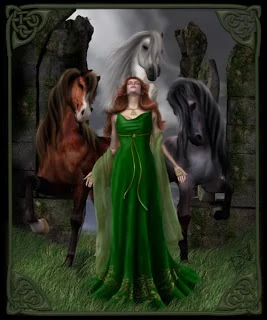
Source: Greek Goddess
Goddess of the Romans
As the Romans enlisted cavalry troops from Gaul, they found themselves in the presence of exceptional horsemen. These skilled riders hailed from a land that revered Epona, the Goddess of Horses, and naturally, the cavalry units began to follow and adopt her as their Patroness. Epona’s benevolent presence and protection resonated deeply with these soldiers, forging an unbreakable bond between them and the equine deity.
From Gaul, Epona’s name traveled far and wide, as Roman soldiers took her veneration with them across the Roman Empire. The Roman military’s adoption of Epona as their divine Patroness further solidified her significance and influence. As her worship reached Rome, she was honored with her own feast day, celebrated on the 18th of December, a testament to her esteemed position in Roman society.
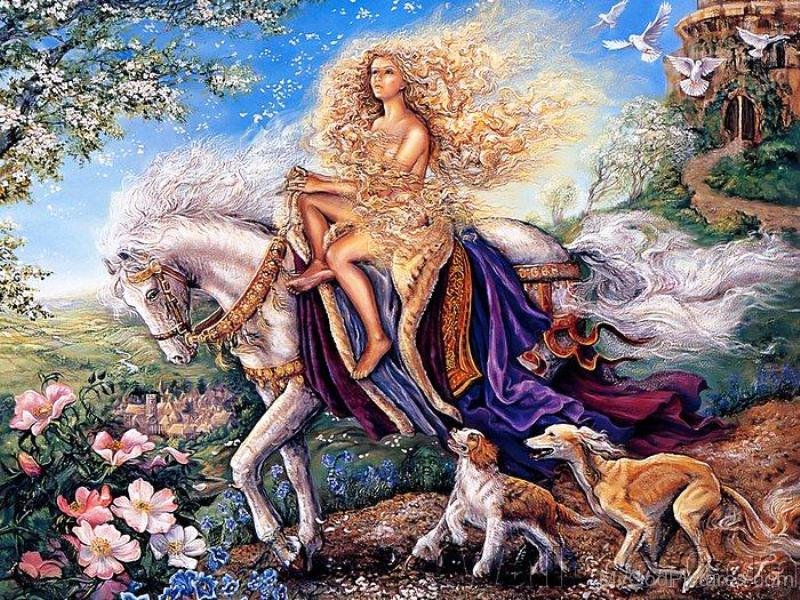
Source: My God Pictures
In Rome, Epona was revered and worshipped as Epona Augusta or Epona Regina, titles befitting her regal and sovereign essence. Notably, she became a patron deity invoked on behalf of the Emperor, signifying her vital role in the protection and prosperity of the imperial realm.
Epona and Rhiannon
Rhiannon, a prominent figure in Welsh mythology, is associated with the land goddess Epona through her equestrian prowess. Riding upon a resplendent white horse, her name, Rigantona, bears the meaning of ‘great, divine, queen,’ epitomizing her regal nature and esteemed status. Legends speak of her riding at a leisurely pace, yet no one can ever catch up with her, hinting at her ethereal and otherworldly attributes.
Macha, a three-fold Irish goddess, shares a connection with Epona through their intertwined tales of strength and curses. In one such story, Macha, heavily pregnant, finds herself compelled to compete in a race against royal horses. Despite the odds stacked against her, she emerges victorious, displaying the indomitable spirit of the divine feminine. However, immediately after her triumph, she gives birth to twins, crying out in pain and placing a curse upon the Ulstermen. This curse arose from her husband’s broken promise and serves as a reminder of the powerful consequences that accompany the wrath of a wronged goddess.
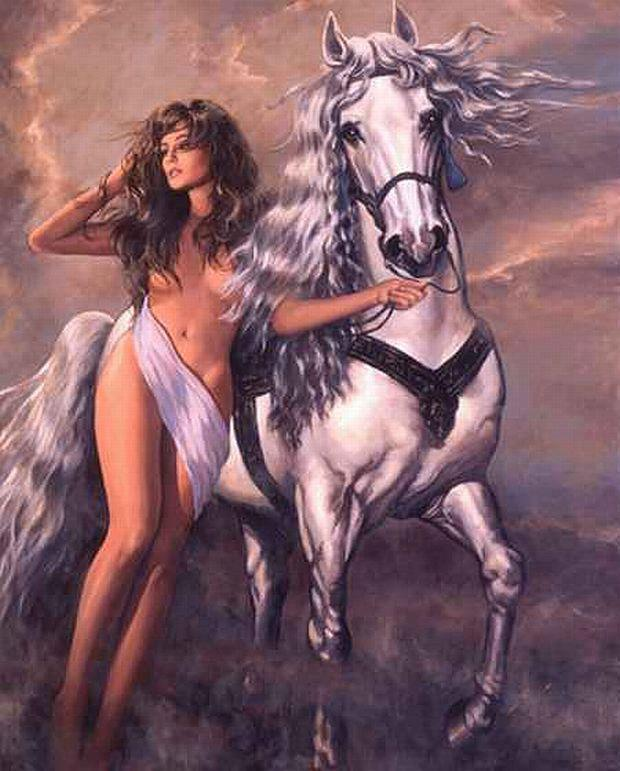
Source: This ‘N’ That
Epona’s Influence on other Religions
The transition of Goddess Epona into the Christian religion marked a significant transformation in the spiritual landscape of the time. As Christianity spread across Europe, it encountered numerous pagan beliefs and deities. This led to various strategies to integrate these ancient figures into the new faith.
Epona’s association with horses and her revered status as the Goddess of Horses presented an opportunity for a smooth assimilation into Christian traditions. To facilitate the process, Epona was reimagined and incorporated as the “holy maid for the horses.” This transformation allowed her to retain her connections to the equestrian world while aligning her role with Christian virtues and concepts.
Modern Influences
Goddess Epona’s influence continues to resonate in modern times, leaving an indelible mark on various aspects of art, culture, and folklore. One notable testament to her enduring allure is her immortalization in Henry Fuseli’s iconic painting, “The Nightmare.” Created in the late 18th century, this haunting artwork portrays a sleeping woman with a demonic horse-like figure, often interpreted as an embodiment of a nightmare or sleep paralysis.
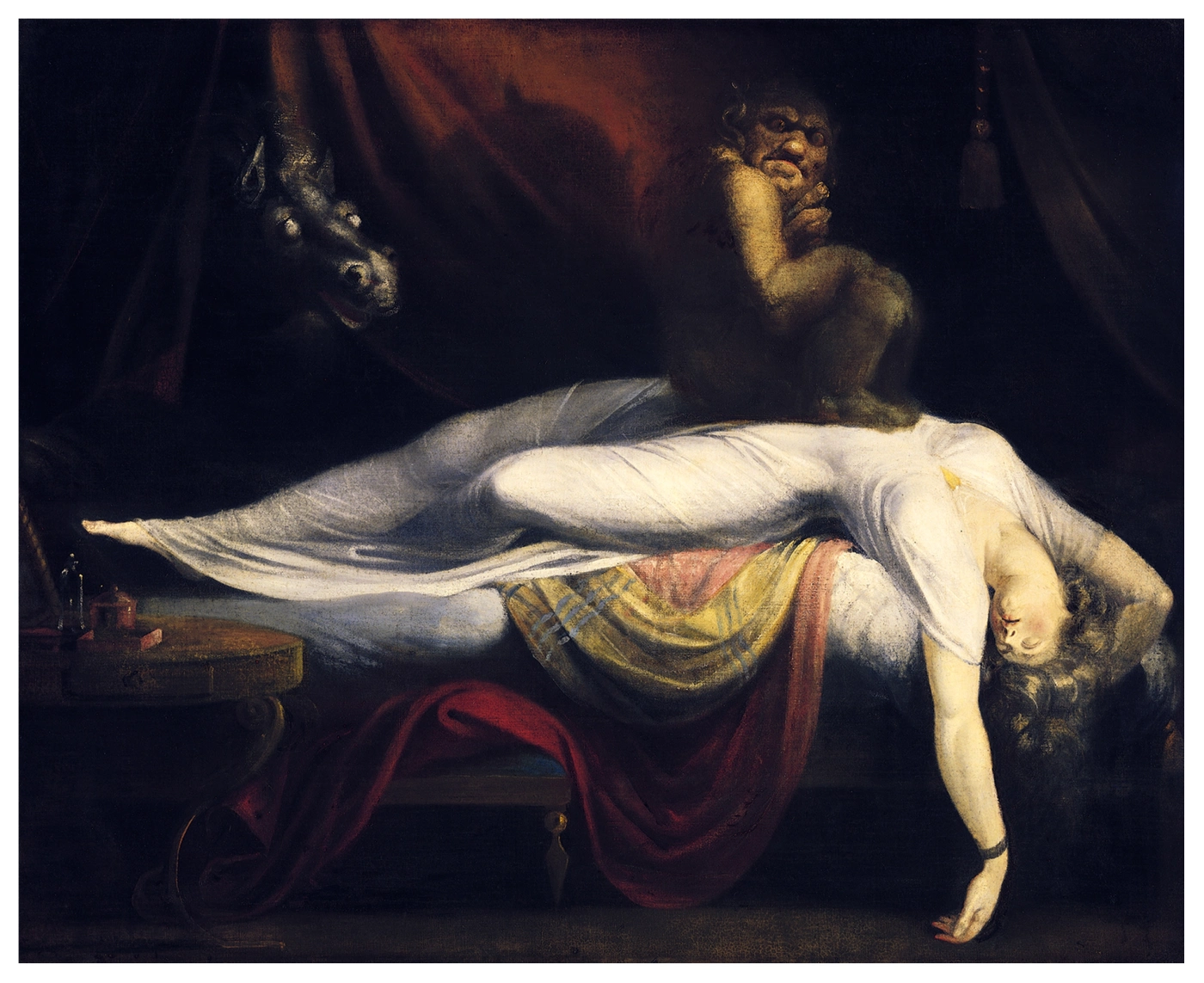
Source: WidowCranky
Through Fuseli’s evocative painting, Epona’s connection to the realm of dreams and the subconscious mind finds contemporary expression. The imagery of a horse-like figure looming over the sleeping woman invokes the spirit of the Goddess of Horses and her potential influence over the dream world. This painting has become an enduring representation of the haunting and mysterious aspects of dreams. Thus, linking Epona to the realm of nocturnal visions in the modern imagination.
Epona, the iconic horse companion, holds a significant and cherished role in the beloved video game series “The Legend of Zelda.” From her debut in “Ocarina of Time” to subsequent appearances in various installments, Epona has become an enduring symbol of companionship, adventure, and freedom within the game’s vast world.

Source: Legend of Zelda Wiki
Final Thoughts
As the cherished guardian of horses, Epona embodies the grace, strength, and untamed beauty of these majestic creatures. Her enduring presence as the Goddess of Horses speaks to the profound bond between humanity and the animal kingdom, transcending language and time. Her veneration as the provider of fertility and abundance reflects the primal connection between ancient civilizations and the land from which they drew sustenance.
In the modern world, Epona’s influence endures, as her symbols and themes have been woven into contemporary art, folklore, and spiritual practices. Her legacy stretches beyond the pages of history, whispering in dreams and tales, reminding us of the significance of the natural world and the strength found in the divine feminine.
In the spirit of Epona, may we continue to honor the bond between humanity and nature, cherishing the grace and wisdom found within the untamed heart of the goddess of horses and fertility.
Sources
The Broom Closet | Goddess Epona
